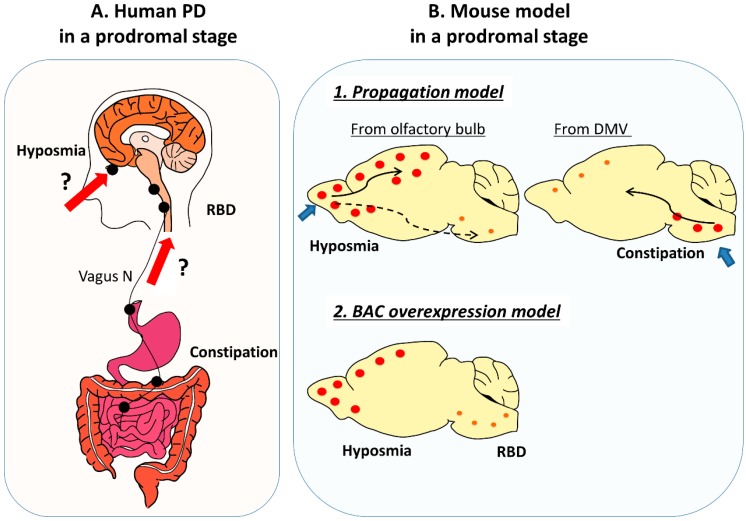Figure 1.
Human Parkinson’s disease (PD) and mouse model in a prodromal stage. (A) In human PD, Lewy pathology is already present in a prodromal stage in extra central nervous system (CNS) tissues including GI tract and autonomic nerves, and in the lower brainstem and/or olfactory bulb. As a prodromal symptom hyposmia, constipation, and rapid eye movement sleep behavior disorder (RBD) appear in a chronologically close period, suggestive of the multifocal initiation of PD. Black dots indicate Lewy pathology. Bold red arrows and question marks indicates hypothesized propagation pathway of Lewy pathology in human. (B) In a propagation model, α-syn aggregates start from the olfactory bulb or the GI tract/ dorsal nucleus of the vagus nerve (DMV), and hyposmia and GI dysfunction appear as its corresponding symptoms in a prodromal stage. In contrast, in a α-syn BAC transgenic model that mildly overexpresses α-syn in its native expression manner, both of hyposmia and RBD are observed with multifocal accumulation of phosphorylated α-syn. Orange dots indicate accumulateon of phosphorylated α-syn and bold blue arrows indicate entry zone of injected α-syn. Thin solid arrows shows main propagateon pathway of α-syn and dotted arrows indicate minor propagateon pathway in animal experiments.

